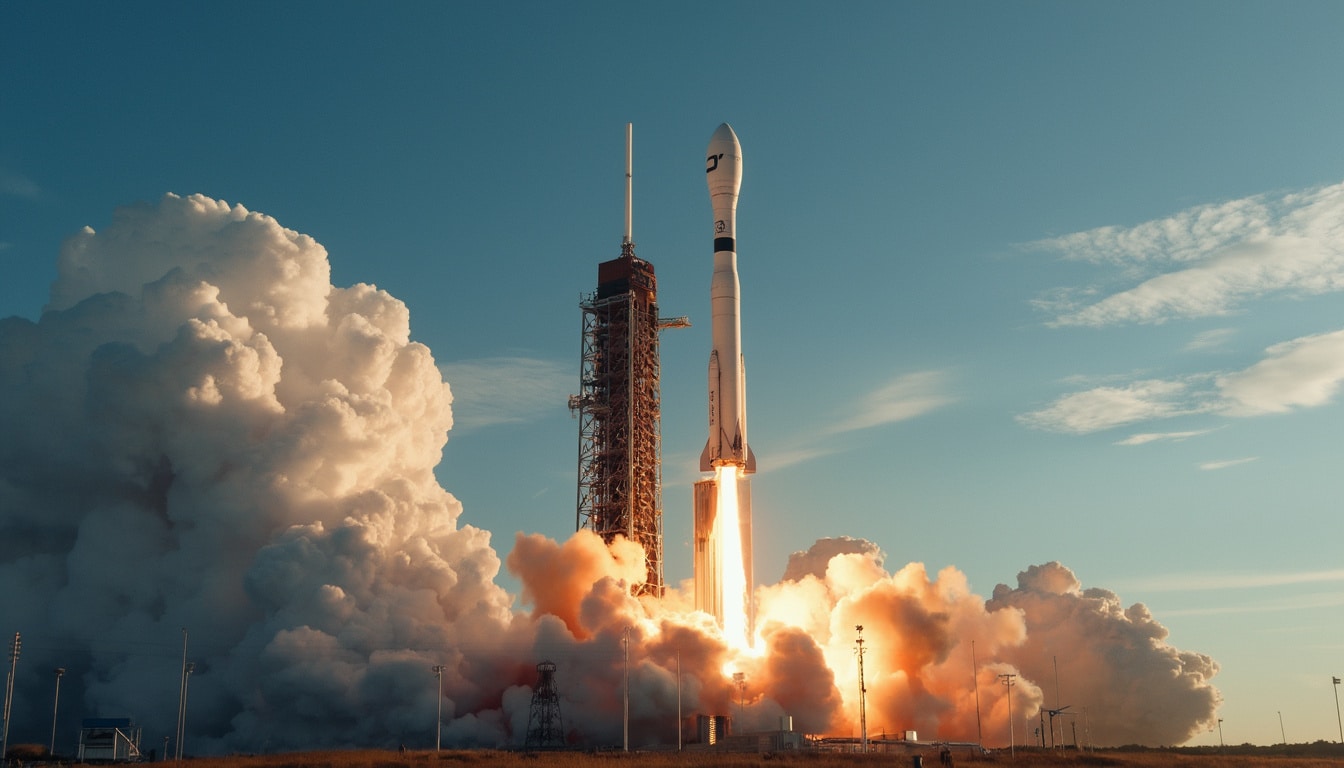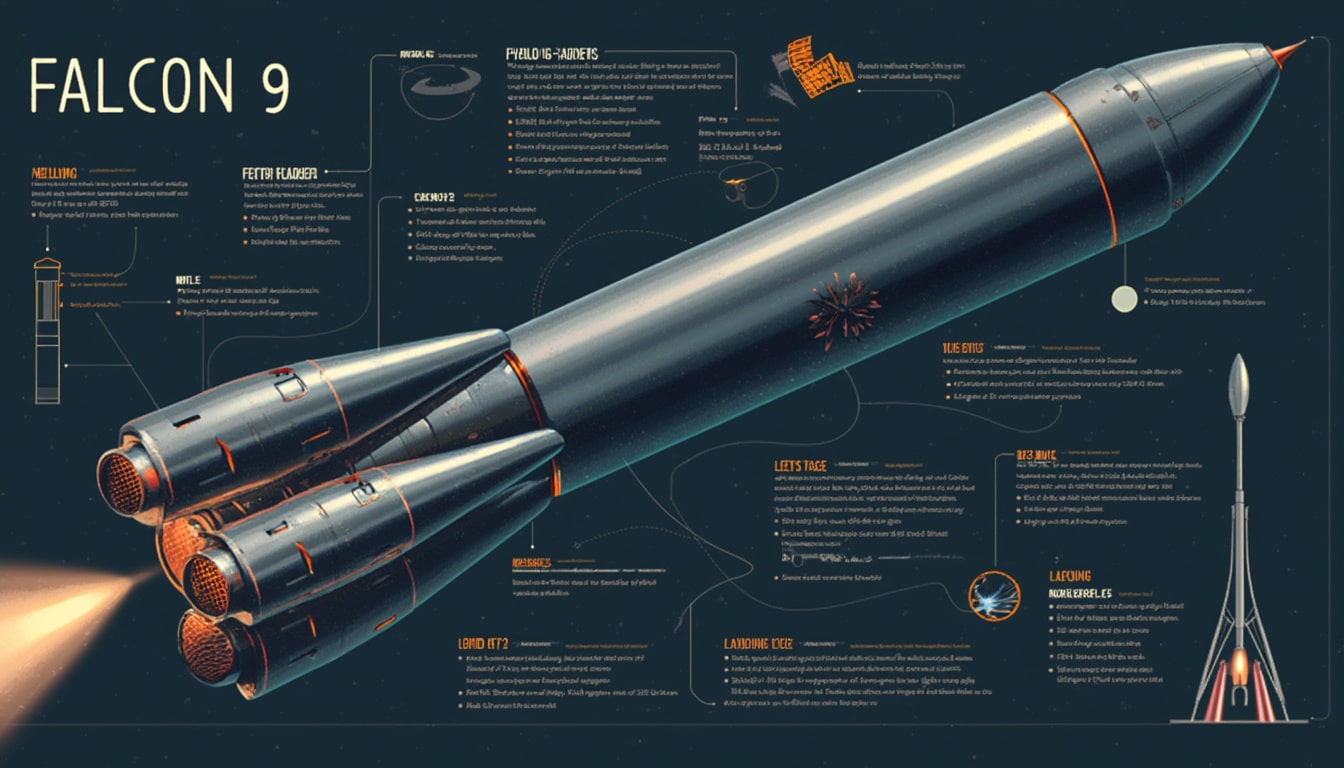SpaceX continues to make headlines with its ambitious plans in the field of satellite technology and space exploration. The latest excitement comes from the upcoming launch of 21 Starlink satellites aboard the Falcon 9 rocket, scheduled to lift off from Cape Canaveral. This event not only marks another milestone for SpaceX but also signifies the advancements being made in global internet coverage through satellite technology.
The Starlink project aims to provide high-speed internet access across the globe, especially in underserved areas. With the launch of these satellites, the capabilities are expected to expand significantly. As we dive deeper into this mission, we will explore the implications, the technology behind it, and the significance of this launch in the broader context of space exploration and commercial satellite deployment.
The Significance of Starlink and Satellite Internet
The concept of satellite internet has taken the tech world by storm, with SpaceX’s Starlink leading the charge. Starlink’s primary goal is to blanket the Earth with internet coverage by deploying thousands of satellites into low Earth orbit (LEO). This mission is crucial for ensuring connectivity in remote regions where traditional internet infrastructure is absent or unreliable.
Global Connectivity
The launch of 21 Starlink satellites is a significant step towards achieving global connectivity. As more satellites are deployed, the latency of internet connections decreases, offering faster and more reliable service. Starlink’s direct-to-cell capability also expands its reach to mobile devices, providing internet access without the need for ground stations. Analysts have noted that this model could transform internet accessibility, particularly in developing countries where cellular infrastructure is limited.
Technological Innovations
Starlink satellites are equipped with state-of-the-art technology designed to ensure seamless connectivity. Each satellite operates in a mesh network that allows data to be routed efficiently between satellites and user terminals. This innovative networking structure is pivotal in reducing the typical latencies associated with traditional satellite internet systems. Furthermore, as more satellites go into orbit, the overall network’s reliability and speed will improve. SpaceX’s advancements in rocket technology, particularly with the Falcon 9, play a crucial role in the timely deployment of these satellites.

The Falcon 9 Rocket: A Workhorse of Modern Space Missions
The Falcon 9 rocket has etched its name in the annals of space history as one of the most reliable launch vehicles to date. With a track record of impressive launches, it is instrumental in not just commercial satellite deployments like Starlink but also in NASA missions and interplanetary explorations.
Design and Versatility
Designed with reuse in mind, the Falcon 9 features a two-stage rocket configuration that allows for significant cost savings and greater launch frequency. The first stage is equipped with engines that can be recovered and reused, showcasing SpaceX’s innovative approach to lowering launch costs. This has encouraged a proliferation of satellite launches that might not have been financially feasible with traditional systems.
Record-Breaking Launches
The Falcon 9 has achieved numerous milestones, including its record-setting 25th flight. Each successful mission not only reinforces its reliability but also affirms SpaceX’s position as a leader in the aerospace industry. The versatility of the Falcon 9, capable of launching multiple payloads ranging from satellites to crewed missions, signifies a robust platform for future space explorations.

The Launch Window and Mission Objectives
The upcoming launch is scheduled for February 8th, with a designated liftoff time of 1:23 PM ET. As excitement builds, the mission objectives are clearly outlined by SpaceX, focusing on deploying the next batch of Starlink satellites while ensuring the safety and stability of the rocket’s flight path.
Mission Preparations
Preparation for each launch involves meticulous planning. SpaceX engineers and technicians carry out extensive checks and simulations leading up to the launch. These protocols are crucial in identifying any potential issues that could arise during flight. The team pays special attention to the weather conditions, which play a significant role in determining whether a launch proceeds as scheduled.
Safe Recovery of Rocket Components
Once the satellites are successfully deployed, the first stage of the Falcon 9 rocket will aim for a precision landing on one of SpaceX’s autonomous droneships stationed in the ocean, named ‘A Shortfall of Gravitas.’ Recovery not only reflects the efficiency of the Falcon 9 design but also contributes to sustainability efforts by allowing the engines to be reused in future launches.
The Future of SpaceX and Starlink
As SpaceX continues its mission to revolutionize space travel and satellite communication, the future appears bright. The upcoming launch of the 21 Starlink satellites marks yet another chapter in the quest for universal internet access. With plans for more launches on the horizon, SpaceX aims to expand its network to provide service across the globe.
New Technologies and Innovations
The future launch missions include innovations that will enhance the capabilities of Starlink. Upcoming satellites are expected to integrate direct-to-cell technology, allowing for more straightforward and effective internet service to mobile devices while on the move. This could change how individuals access the internet, making it available nearly anywhere without reliance on ground-based infrastructure.
Collaborations and Partnerships
SpaceX’s strategic partnerships with telecommunications companies will also pave the way for broader service integration. Collaborations with established entities will facilitate the distribution of Starlink services, particularly in regions where traditional internet providers are scarce. This approach promises to enhance connectivity for countless individuals globally.

Final Thoughts on SpaceX’s Ambitious Goals
SpaceX’s unwavering focus on innovation and sustainability has positioned it at the forefront of the aerospace industry. With the upcoming launch of 21 Starlink satellites, the company is not just looking at commercial success but is also addressing global connectivity issues. The implications of such technology extend beyond entertainment; they have the potential to transform education, healthcare, and overall quality of life.
As we witness the launch unfold, it is essential to understand the broader impact of these missions and the advancements in satellite technology paving the way for a more connected world.




Leave a Reply